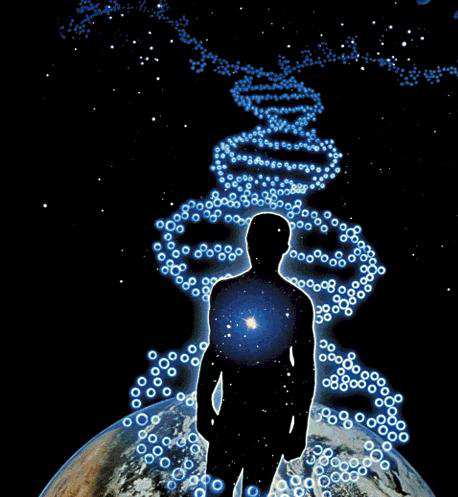INTRODUCTION
 | EACH of us carries about half a dozen defective genes. We remain blissfully unaware of this fact unless we, or one of our close relatives, are amongst the many millions who suffer from a genetic disease. About one in ten people has, or will develop at some later stage, an inherited genetic disorder, and approximately 2,800 specific conditions are known to be caused by defects (mutations) in just one of the patient's genes. Some single gene disorders are quite common - cystic fibrosis is found in one out of every 2,500 babies - and in total, diseases that can be traced to single gene defects account for about 5% of all admissions to children's hospitals. [1] However, advances in molecular biology over the years have triggered an unprecedented expansion of knowledge about human genetics. The rise of new genetic technologies, and their implied power, has engendered a new hope among the scientists- a hope of finding cures for many deadly diseases. |
Biologists will remember Monday, June 19, 2000, as a historic day. Flanking Bill Clinton, the 42nd President of the United States of America, were Francis Collins of the National Institutes of Health (NIH), leader of the publicly funded Human Genome project, and Craig Venter, CEO of Celera Genomics of Rockville, Maryland, to announce the near-completion of the sequencing of the human genome. Imagine: The entire 3 billion nucleotides of our genome are decoded— an impossible task just a few years ago. The estimate of the number of genes ranges from a low of 35,000 to a high of more than 100,000.[11]
Consequently, we now have an extraordinary resource of detailed information about the structure, organization and function of the complete set of human genes. That information can be thought of as the basic set of inheritable “instructions” for the development and function of a human being, and it might provide new strategies to diagnose, treat, cure and prevent human diseases.[5]
One such potential approach to the treatment of genetic disorders in man is gene therapy. Gene therapy can be defined as a collection of approaches that involve the introduction of genetic material into a cell to treat disease or at least to improve the clinical status of a patient (i.e., slow the progression of the disease and thereby improve the quality of life). [2] However, at present, gene therapy is still at the clinical research stage. [3]
Gene therapy is intellectually connected to metabolic engineering. However, the complexity of humans presents an even greater challenge than the metabolic engineering of a single cell. Gene therapy is a quantitative problem that makes good of the quantitative skills of engineers. Basically, the right gene needs to be delivered to only the right tissue, target in the right amount, with the gene products being expressed at the right level at the right time for the right length of time. For gene therapy to be ffective, many things have to go right.[52]
In 2003 the Government pledged £50 million over three years to harness the potential of developments in genetics for the benefit of NHS patients. £10 million of this has been earmarked for gene therapy research and development. [3]
Gene therapy carries the promise of cures for many diseases and for types of medical treatment most of us would not have thought possible. With its potential to eliminate and prevent hereditary diseases such as cystic fibrosis and hemophilia and its use as a possible cure for heart disease, AIDS, and cancer, gene therapy is a potential medical miracle-worker.[4]
However, it also prompts considerable controversy. Despite the benefits derived from genetic advancements, some observers have voiced concerns that altering human genes could cause harm to people or the environment. Others fear that new genetic technologies may enable scientists to modify genes that affect characteristics other than those responsible for disease. They warn that determining who has undesirable genetic characteristics could lead to discriminatory practices. And those and other challenging issues place geneticists directly at the crossroads of science and social responsibility.[5]
Statistics
The number of unique visitors is:
Site's visitors:
| Id | IP | Country | City | Referer | Is a bot? |
|---|---|---|---|---|---|
Translate This Page